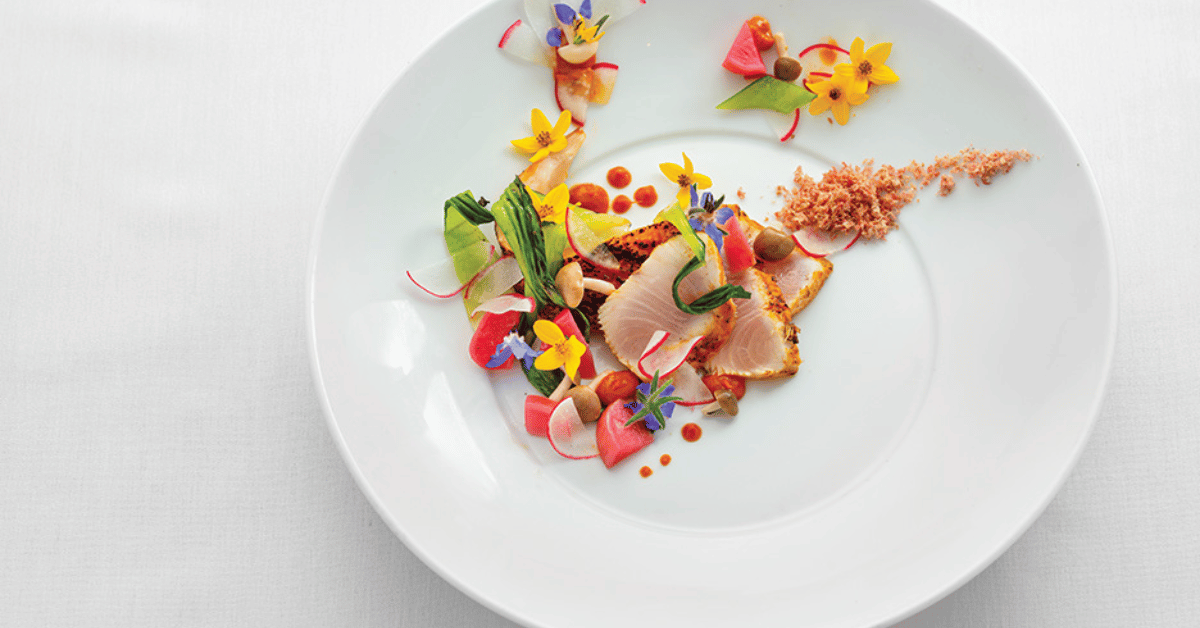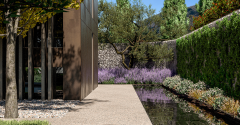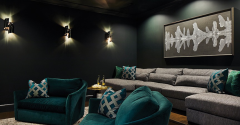Well-designed luxury garages are a far cry from the cluttered, dusty rooms where most standard vehicles are kept. For high-end homeowners, their garage upholds the elegant aesthetic found in the main home; but instead of sheltering people, the garage protects their luxury vehicles.
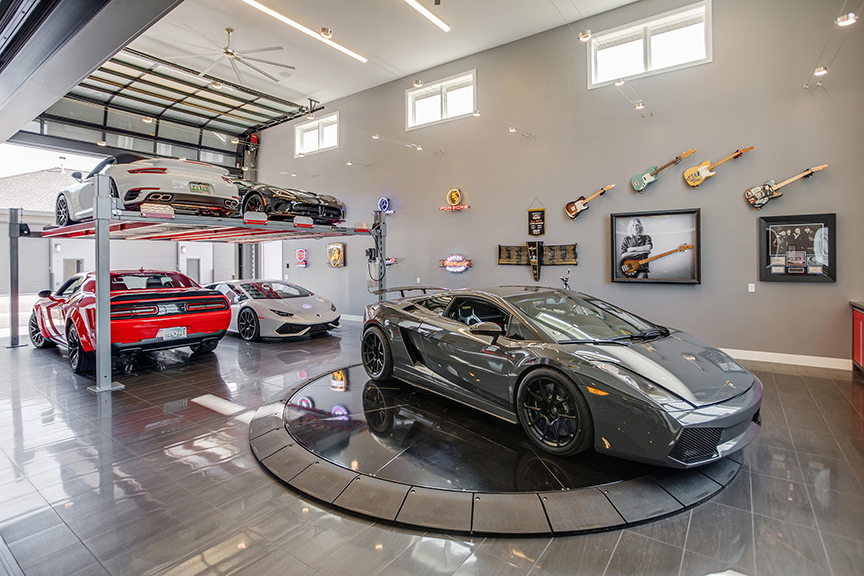
Widely considered to be the perfect extension to a dream home among car enthusiasts, luxury garages are strategically designed to show off the homeowner’s collection of vehicles and related items. Some manufacturers have developed materials specifically to be used for cabinetry in luxury garages, removing the need for kitchen-like cabinets to ruin the sleek, yet rugged vibe of the space. This cabinetry can be complimented by a stainless steel sink and counter space to increase functionality.
Slatwall panels are another popular storage strategy — they double as a finished wall covering and place to store tools and accessories. Similarly, a polyaspartic floor coating not only contributes to the polished look, but also serves as a durable protective layer to prevent damage due to abrasions, spills or moisture.
When designing a luxury garage, consider shades of blue, gray, red and black. Metallic accents, such as a diamond plate backsplash, add depth to this look. Choosing a color scheme that mirrors that of the luxury vehicles will help you achieve a put-together, distinguished design.
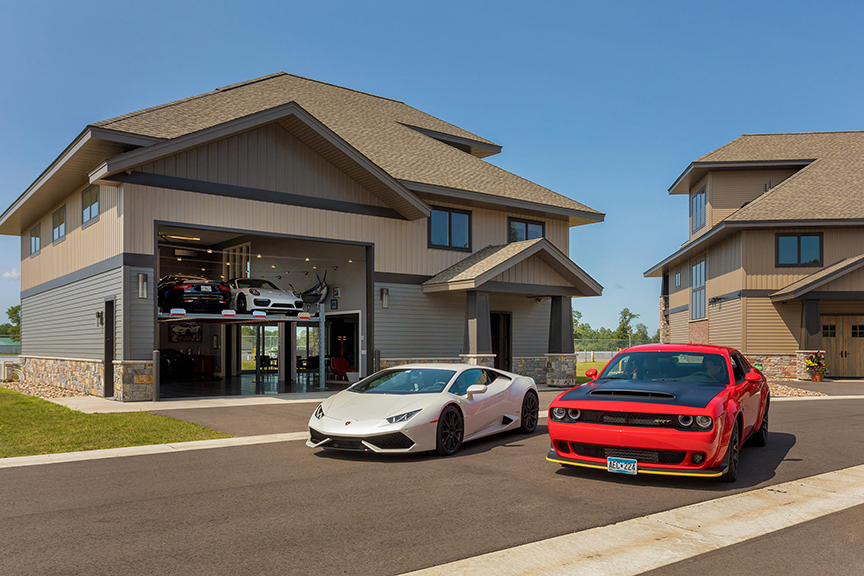
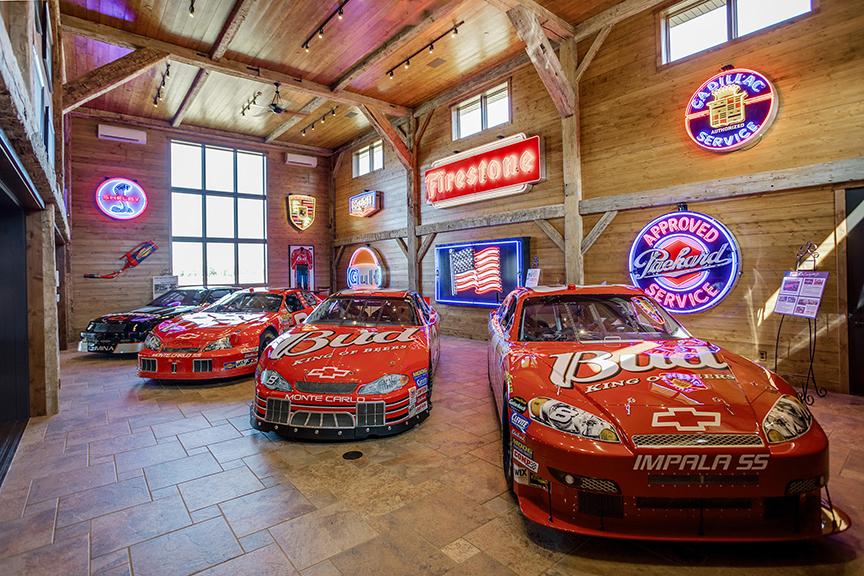
Some luxury garage owners choose to install a car lift. This can help homeowners store more vehicles in an area with limited space, or keep seasonal vehicles out of the way during the winter. Other popular amenities include upgraded garage doors that can be controlled remotely via smartphone, as well as year-round climate control. Especially in climate-controlled garages, many hobbyists choose to include a workshop, as well as a TV or sound system to turn their luxury garage into the ultimate leisure space.
Photos courtesy of BIR Luxury Garages.
Fringe and tassels have recently made their way back into fashion, and this retro look is now making its way into our homes.
While the look may not be for everyone, the new version of fringing is definitely making waves in the interior design world in 2019. Whether it’s on lights, mirrors, or cushions, fringe can be a great way to add some fun and texture to sleek, minimalist spaces. Here are a few key ways to easily introduce the new fringing style to your home:
Pictured Right: Sevillian Sofa by Covet House
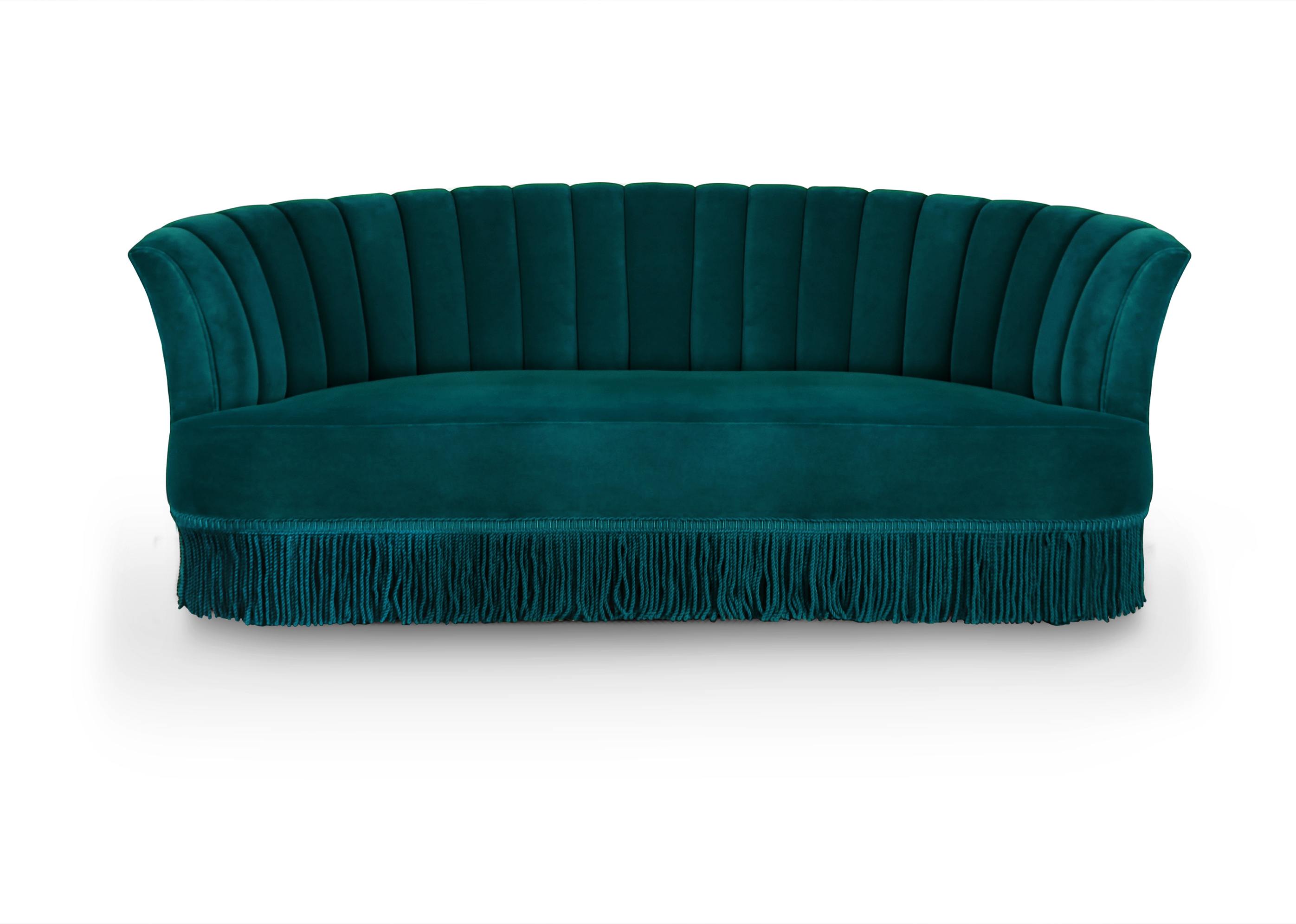
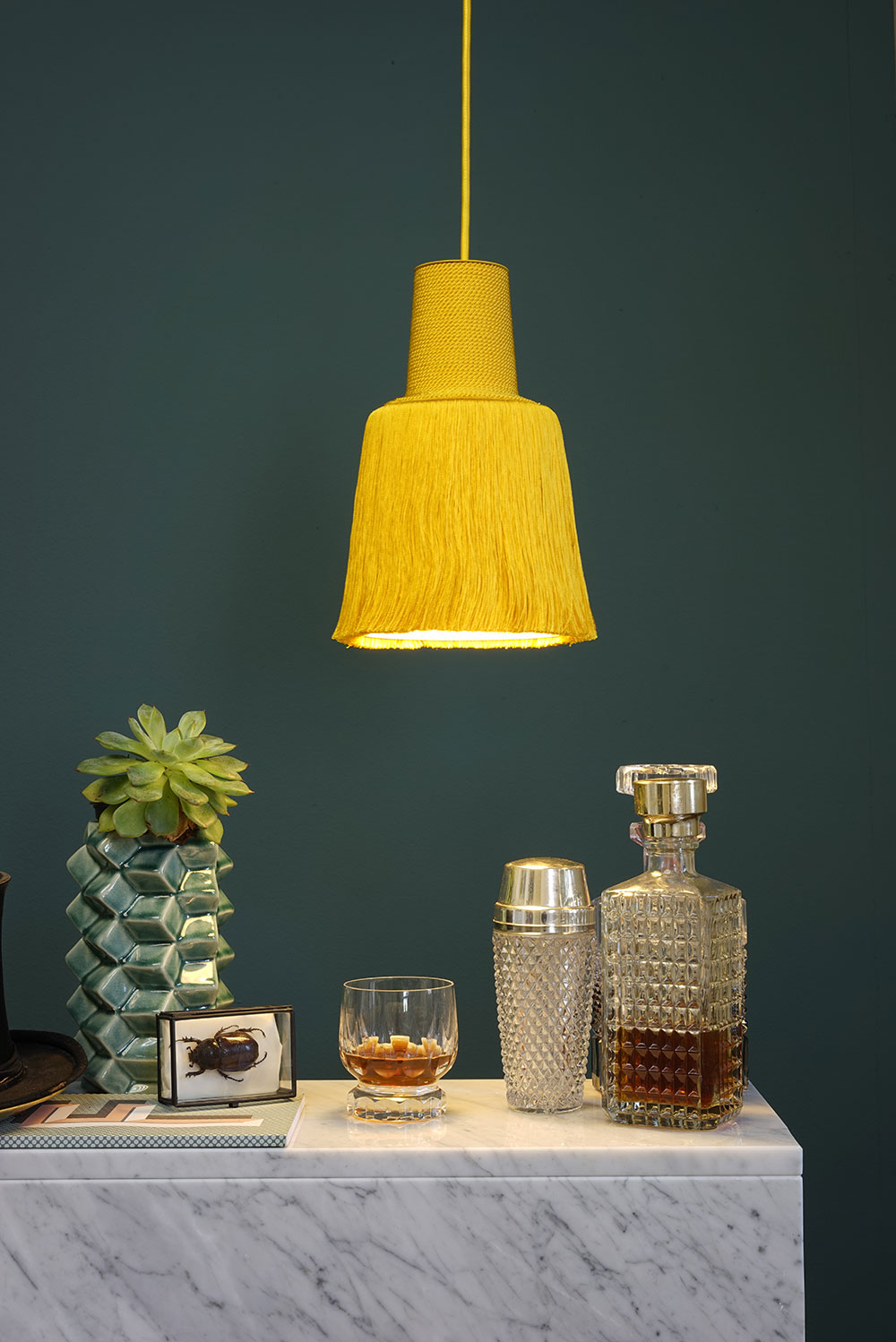
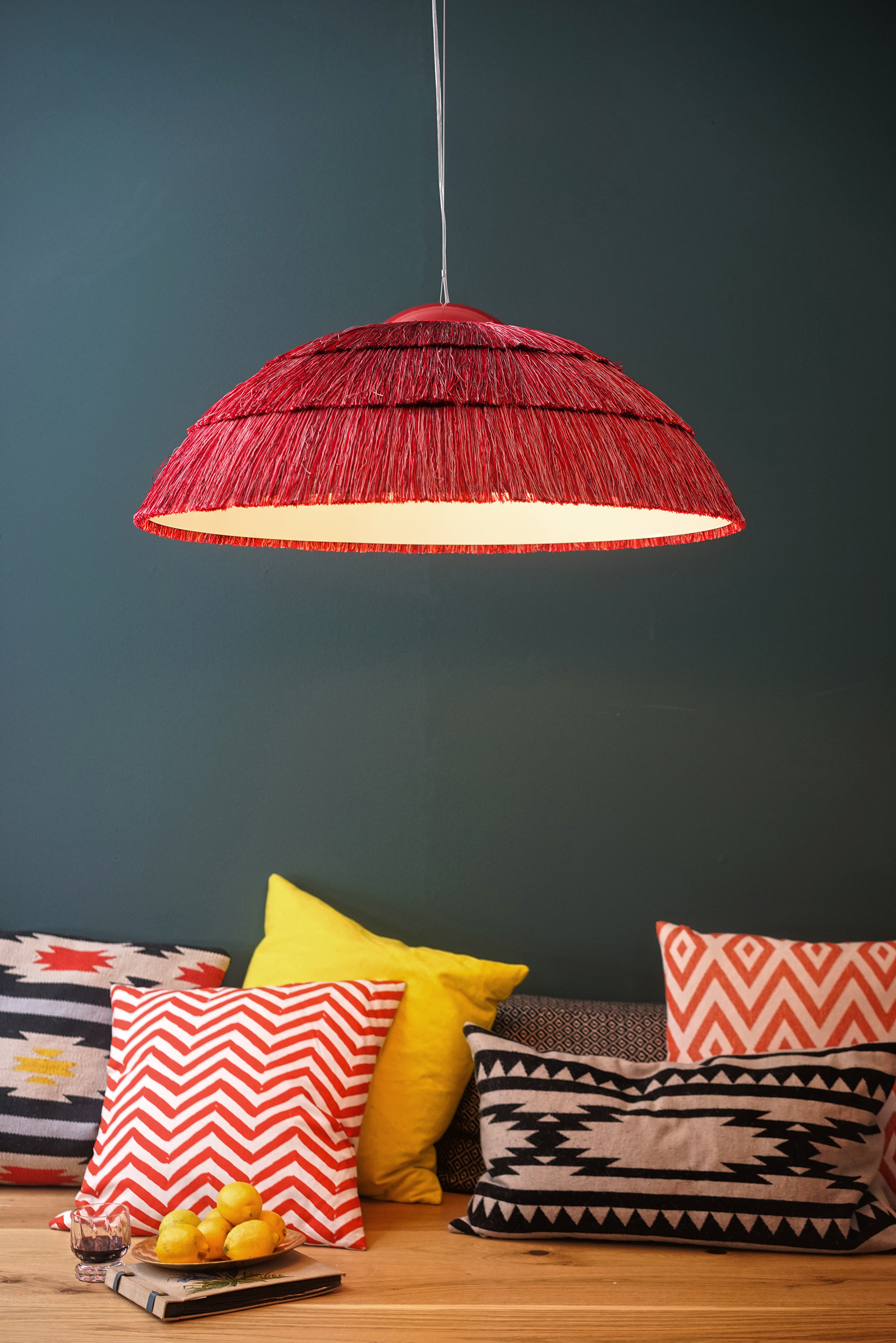
Lighting
Make a bold statement with fringed ceiling lights or even a fringed chandelier. For a more subtle look, a fringed lamp will add just the right amount of interest and texture to a gloomy corner of a room.
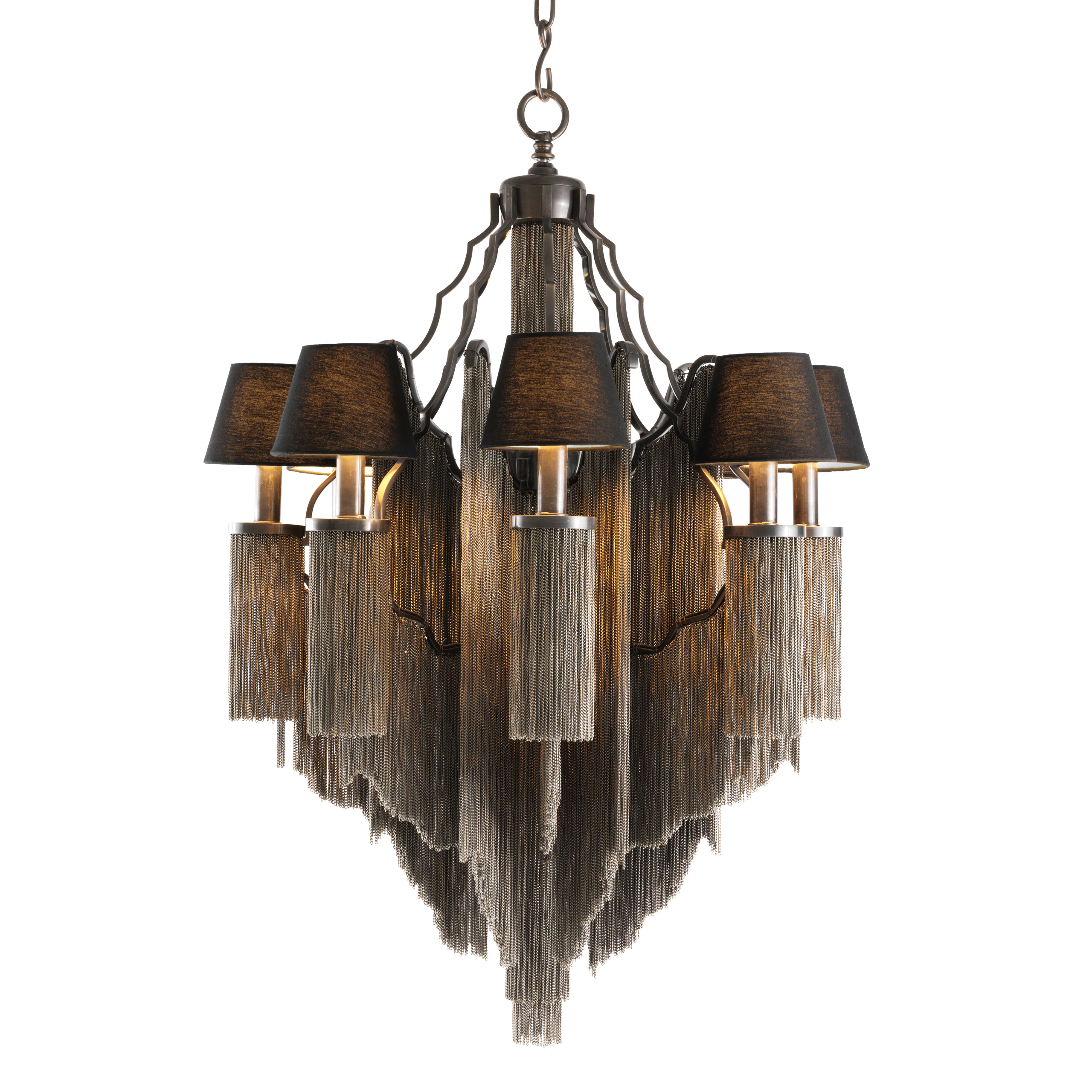
Furniture
Fringed furniture is definitely a more prominent retro look and will appeal to those who really want to embrace the trend and turn heads. Many furniture pieces can be ordered with a fringe added to the bottom such as sofas, footstools and chairs.
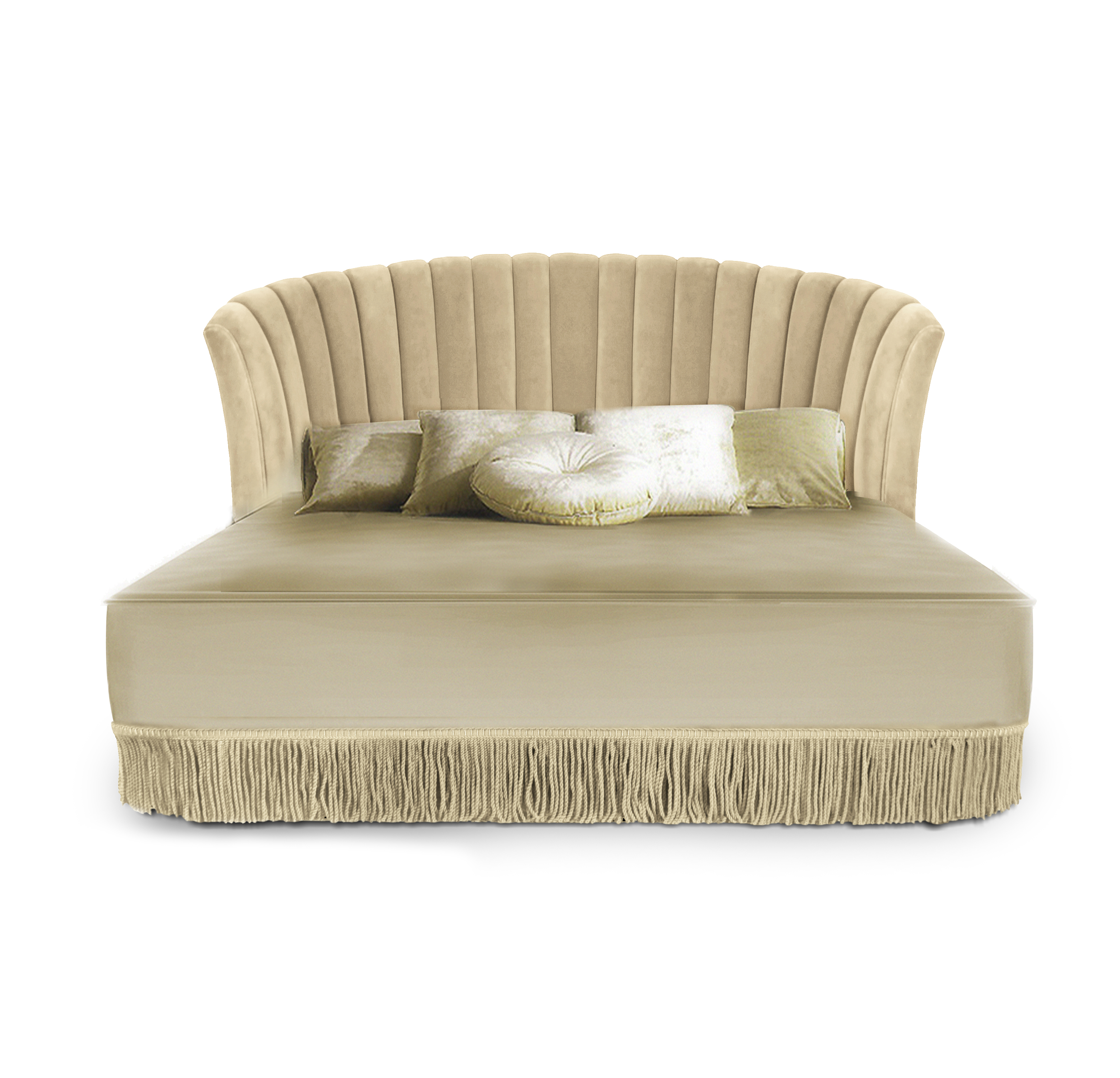
Sevilliana Bed by Covet House
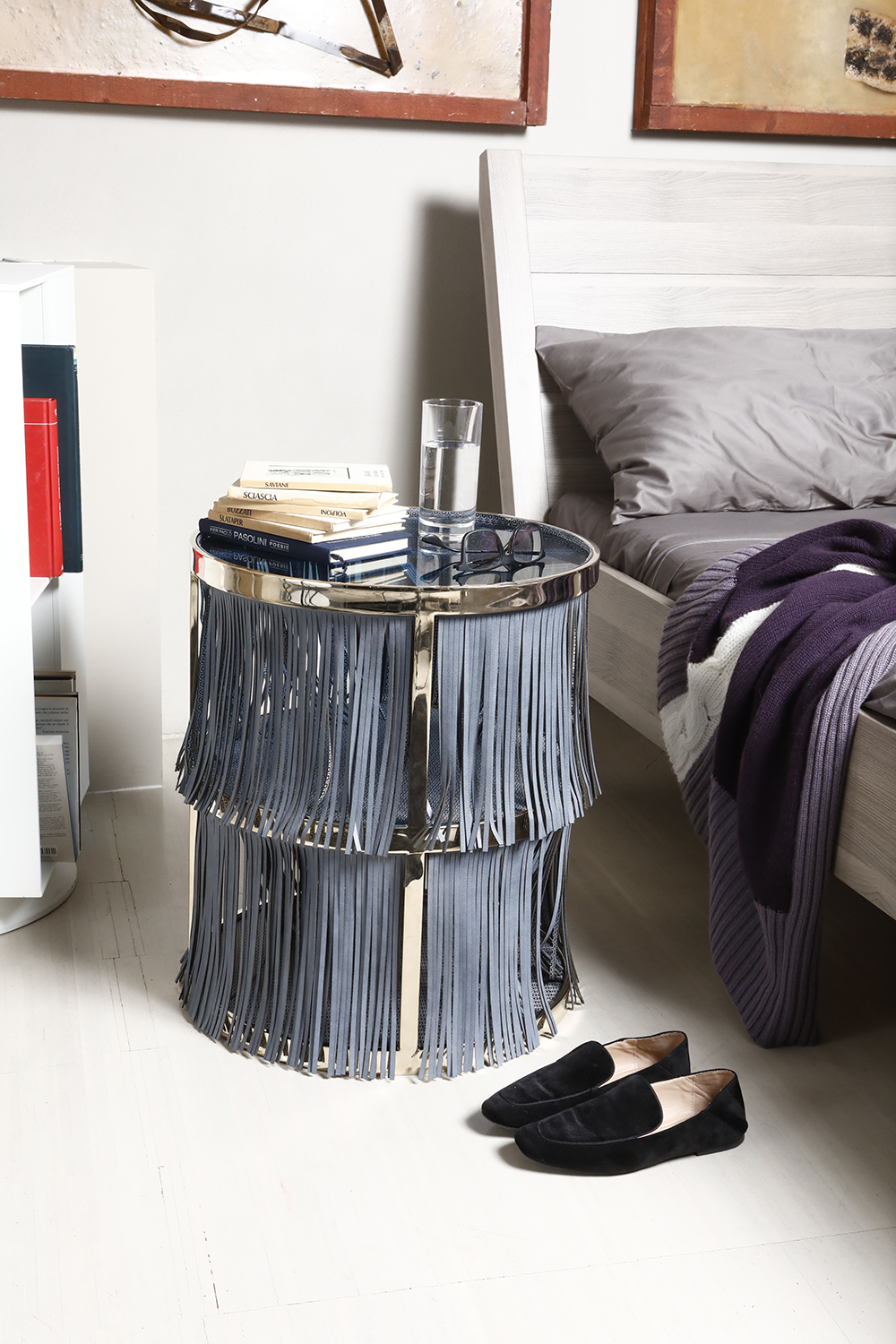
Clipper by Amerigo Milano
Accessories
If you’re not ready to fully embrace fringe in your home, a simple accent or accessory can be the perfect way to experiment with the trend. Blankets, duvet covers and wall hangings are a few easy ways to add this trend to your home.
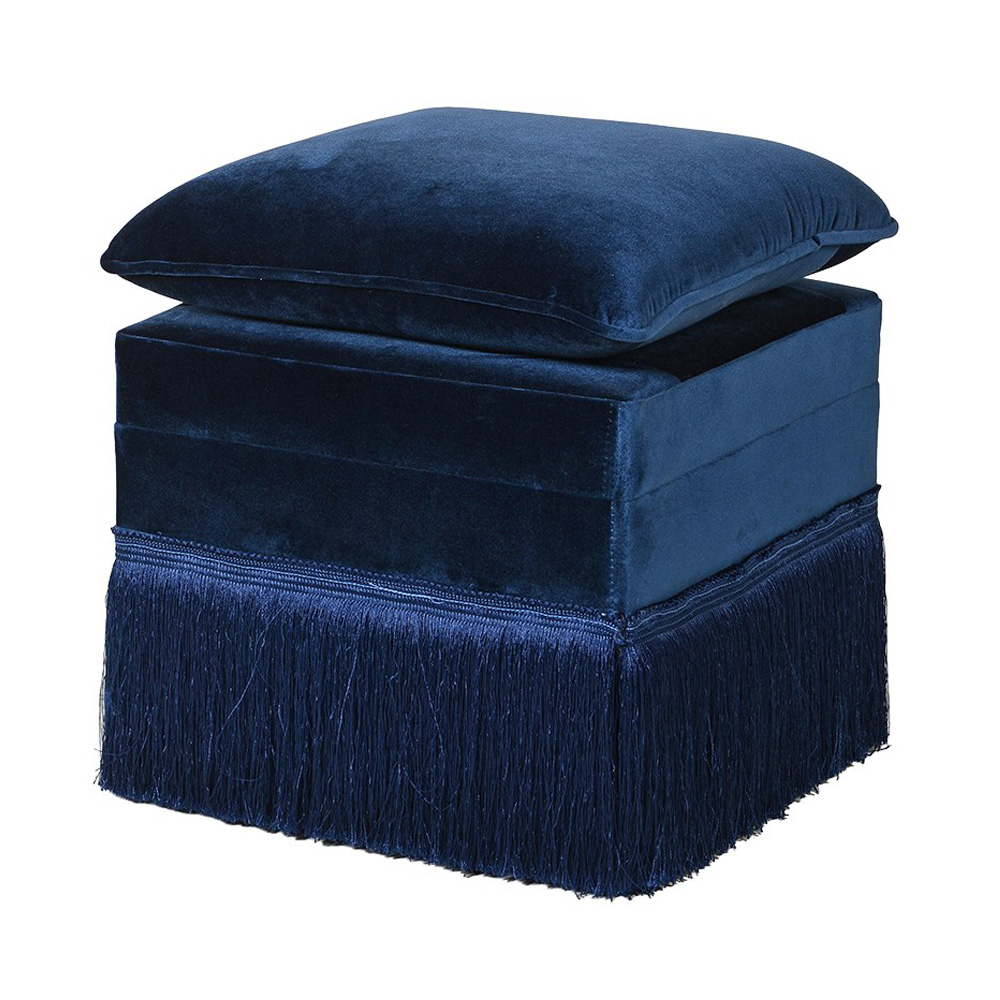
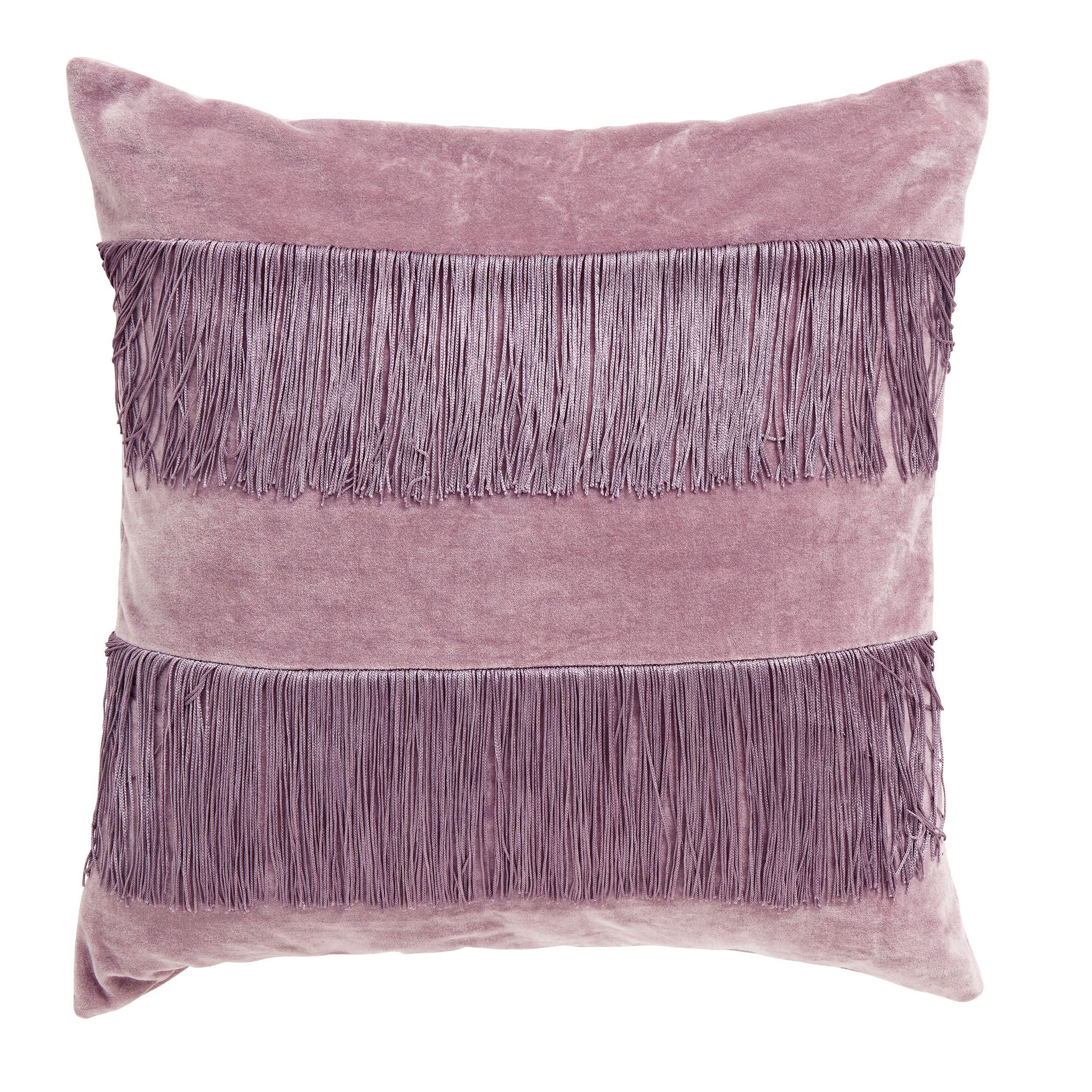
By AUDENZA
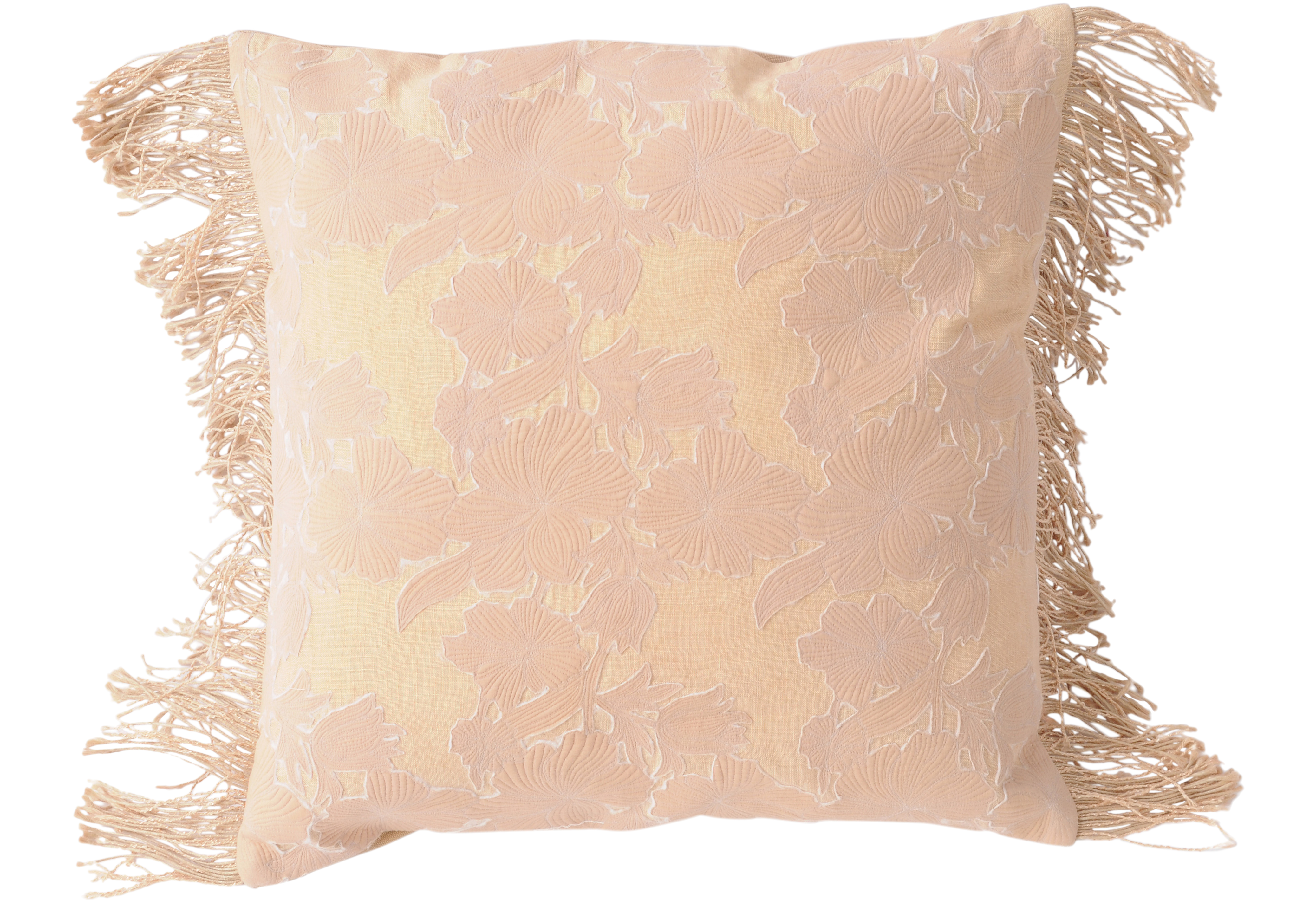
Pillows
Add a few cushions or pillows with a fringe to your space as a small introduction to the trend. Mix and match them with regular cushions. Fringes work well with a knitted texture and there are even sparkly and metallic options available.
From California and Utah to Vermont and Upstate New York, ski lodges throughout the country are embracing luxury mountain lifestyles.
Translating into residential real estate, it is no surprise that ski lodge mountain-style design continues to grow in popularity among homebuyers.
Blending rustic style with modern features, this stunning cabin — located in Sugar Bowl Ski Resort, California — is the epitome of a luxury mountain living.
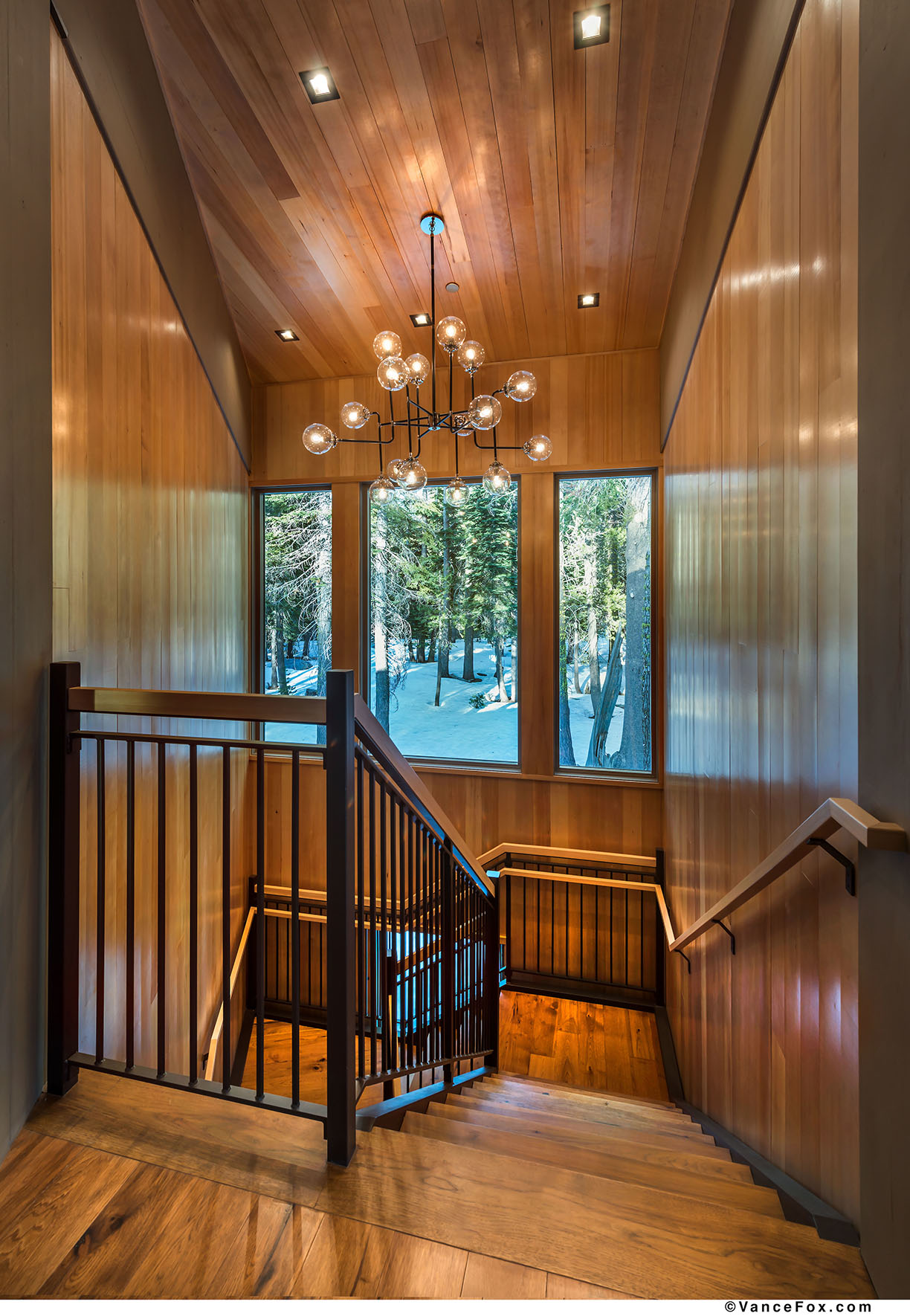
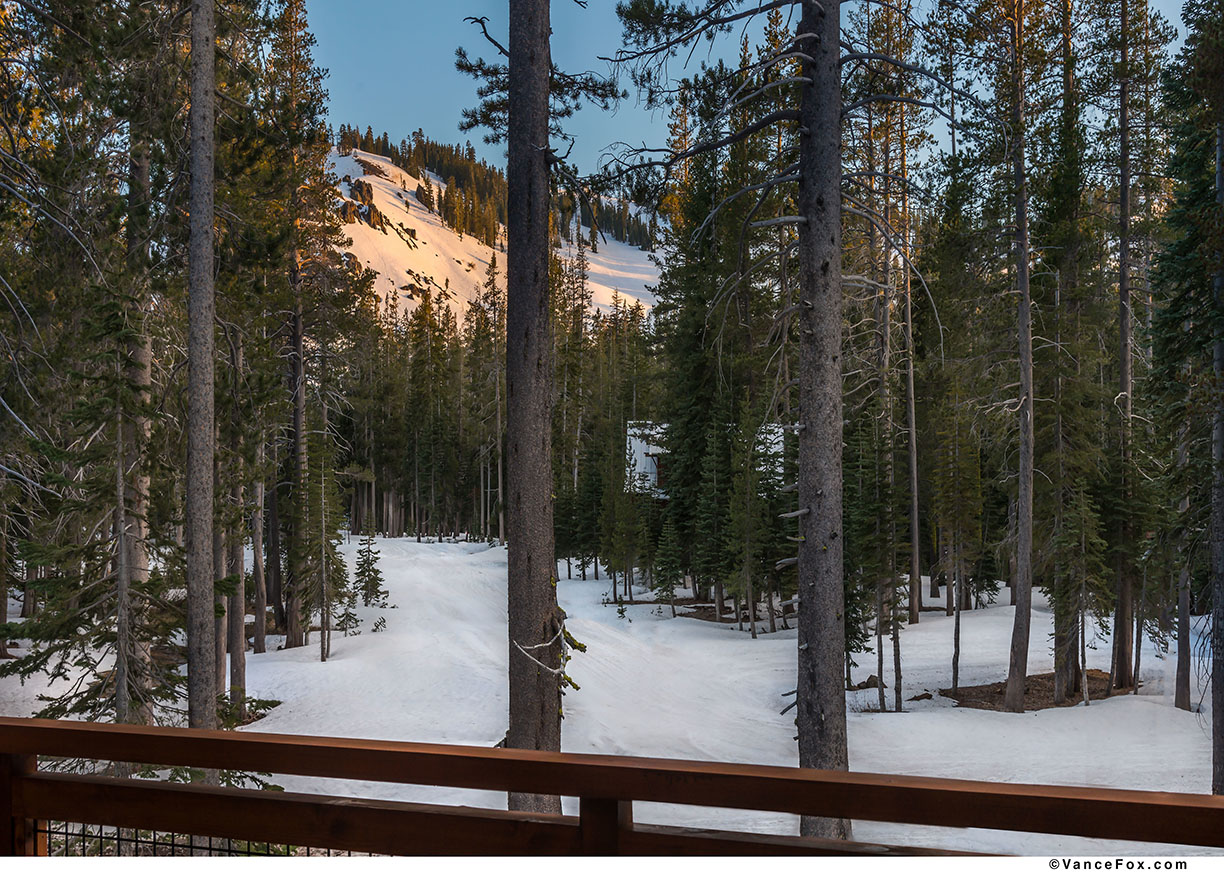
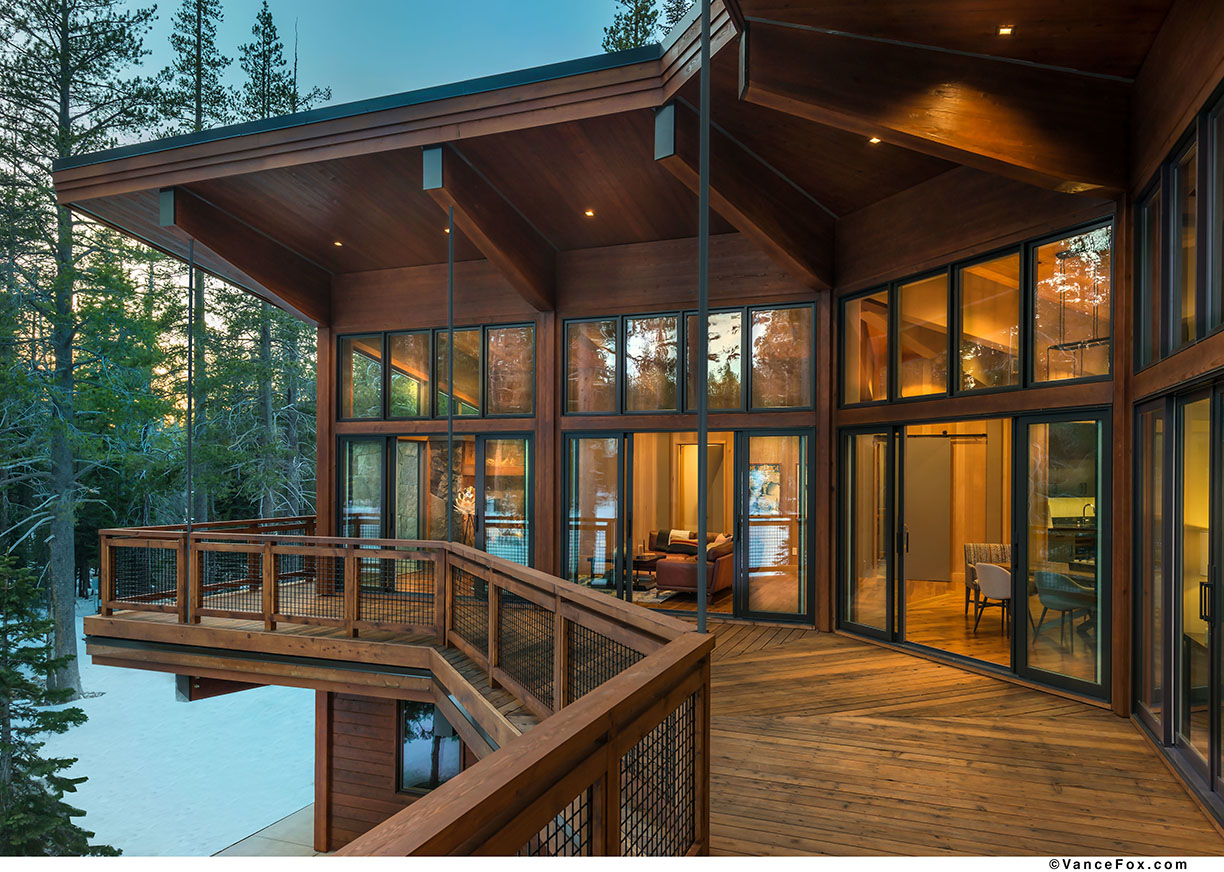
With a pitched roof and oversized deck, granite chimneys on either end leading to generous fireplaces, and a warm-toned interior, the 4,200-square-foot estate was designed by BCV Architecture + Interiors. Boasting a bright and airy floor plan, the home’s design was inspired by a traditional ski lodge. From the large windows, cozy fireplaces, and the use of wood and stone, no detail was forgotten.
We spoke with Hans Baldauf, co-founding principal at BCV Architecture + Interiors, who shares must-have design elements when creating a traditional ski lodge. He also predicts a few upcoming mountain living design trends for 2019.
Incorporate Wood and Stone
In 2019, Baldauf predicts that homebuyers will lean toward “the balance of classic, organic materials — like wood and stone — used in a modern way, with clean lines.
Embracing stone accents, this home features granite chimneys on both sides of the house.
“The rugged natural quality of the stone felt appropriate because of Overland Trail Cabin’s setting high in the Sierra,” says Baldauf.
In terms of the use of wood, “cedar was a natural choice for BCV when designing the exterior because it adapts well to the climate and looks beautiful over time.”
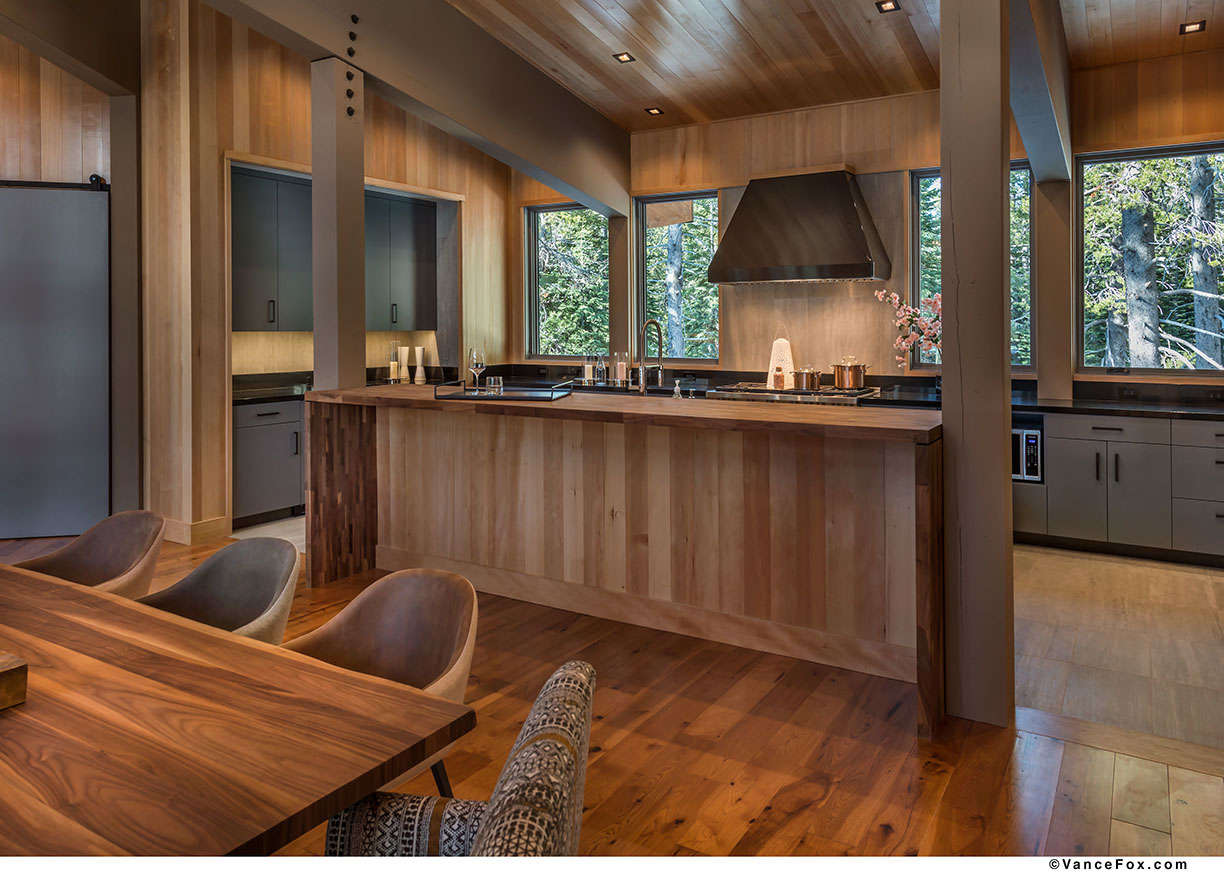
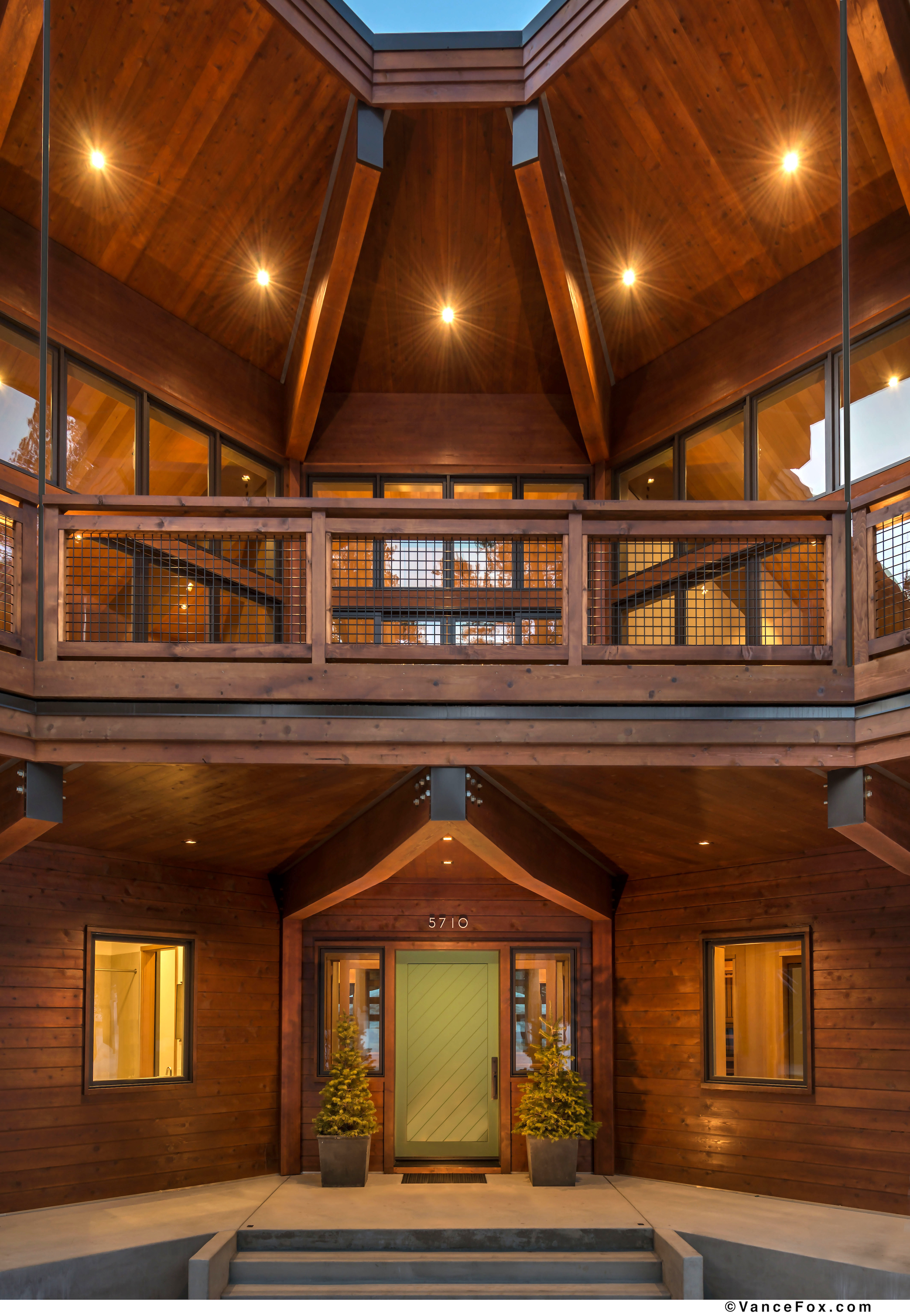
Embrace Natural Light
Homebuyers are also looking to embrace natural light and expansive glazing in 2019. “Whereas traditional mountainside dwellings might feel more closed-off or protected, BCV finds that our clients increasingly want to bring the experience of living in the forest/mountainside into the home. Large windows and glass doors help to create a better connection with the outdoors,” Baldauf says.
Overland Trail Cabin was designed to take full advantage of its unique site, which includes stunning views of the surrounding forest and the nearby slopes of Mount Disney.“Windows at each level bring an abundance of natural light into the interior, and the orientation of the home creates a wonderful change in light throughout the day,” Baldauf says.
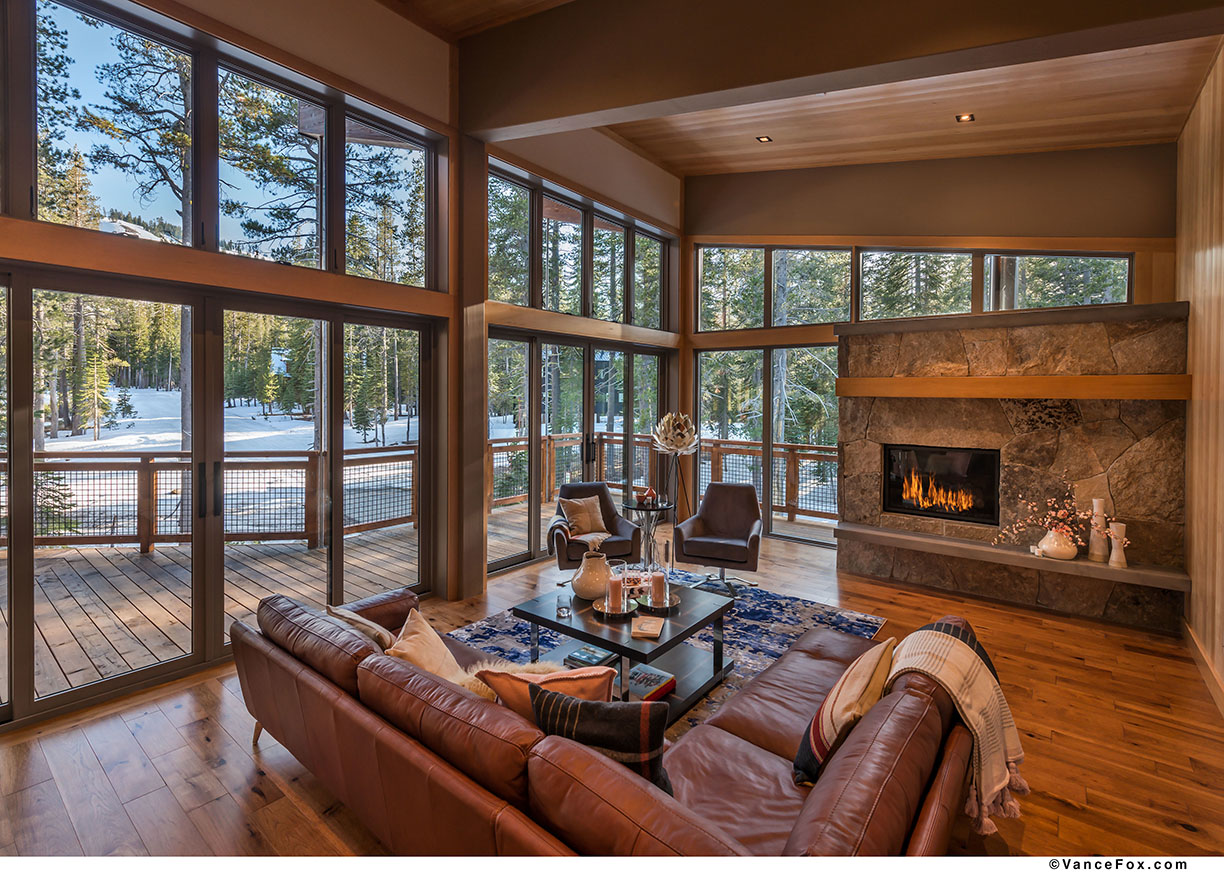
Stick with Warm and Neutral Colors
The use of warm and neutral colors helps to create an inviting and relaxing atmosphere, perfect for a traditional ski lodge. “Overland Trail Cabin incorporates natural materials with a regional focus, and BCV found that these colors complement the use of stone and wood throughout the house,” Baldauf says.
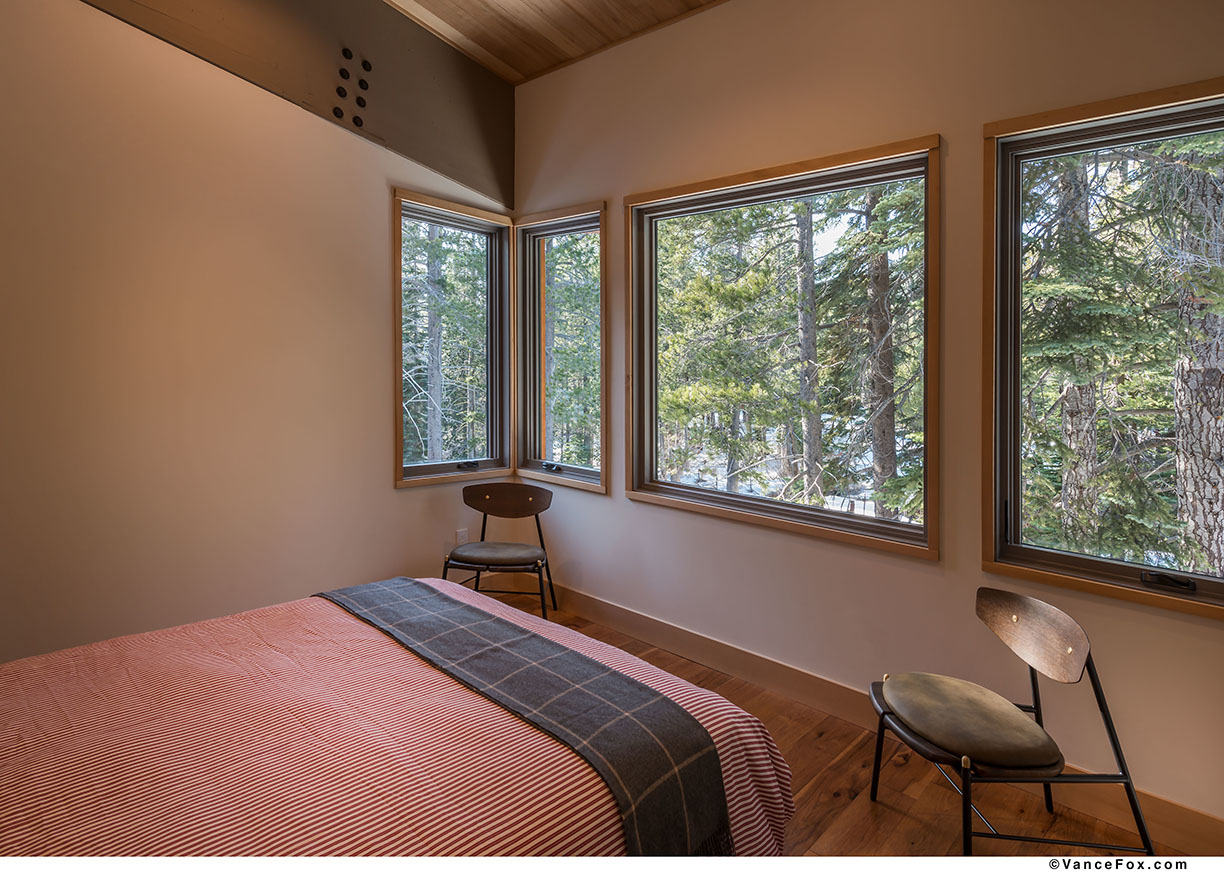
Stay cozy with fireplaces
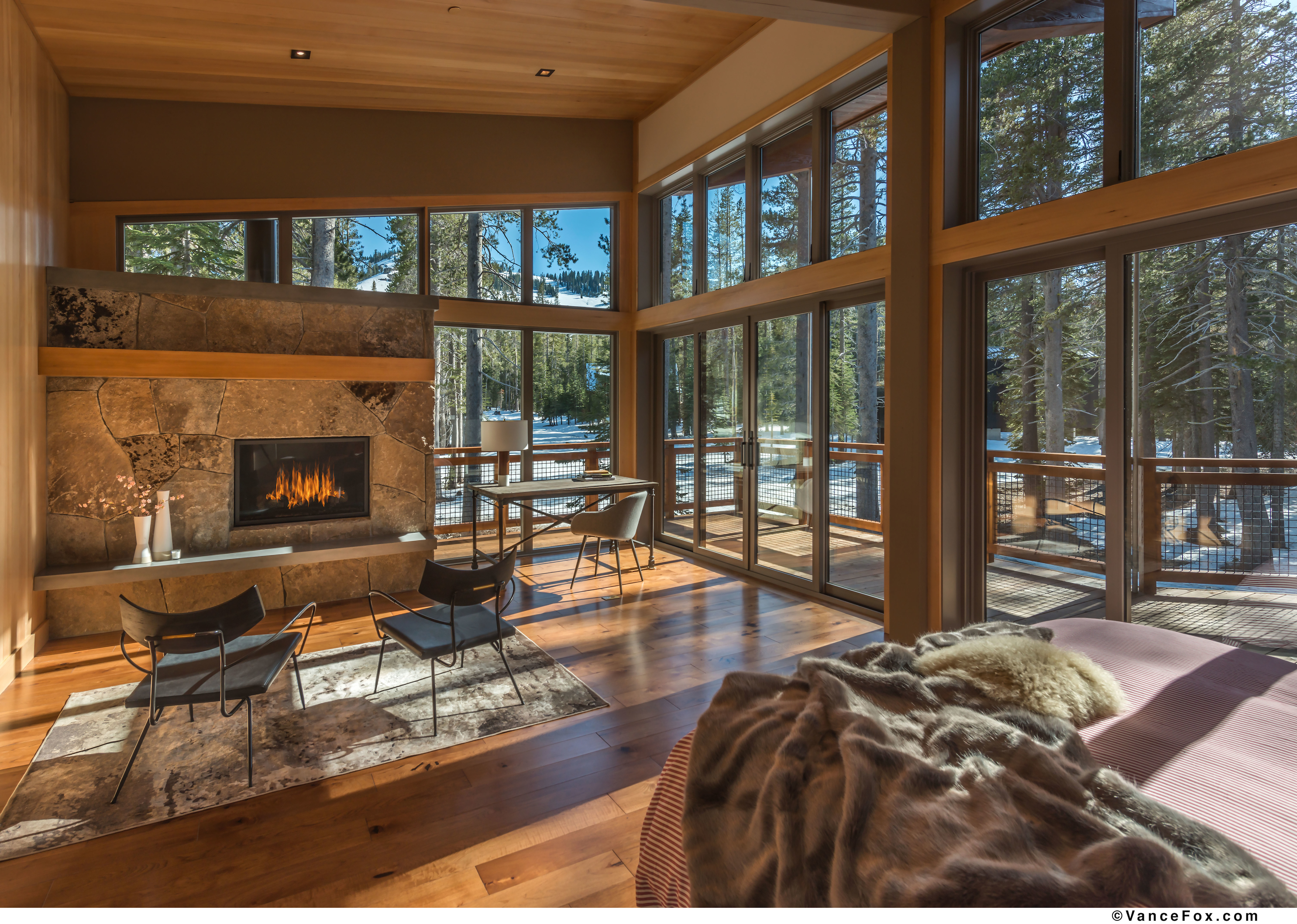
The use of fireplaces is also very important when creating a warm and intimate home. “BCV designed this home as a place that would feel appropriate in hosting large groups and gatherings as well as providing a cozy mountain getaway. With this in mind… a fireplace anchors the living area and contributes to a cozy, intimate feel to this part of the great room,” Baldauf explains.
Build a Pitched Roof
Both practical and aesthetic, the home’s pitched roof “works to shed snow away from the deck and entry areas of the home, while also referencing the pitched roof of the Wurster-designed village lodge,” according to Baldauf.
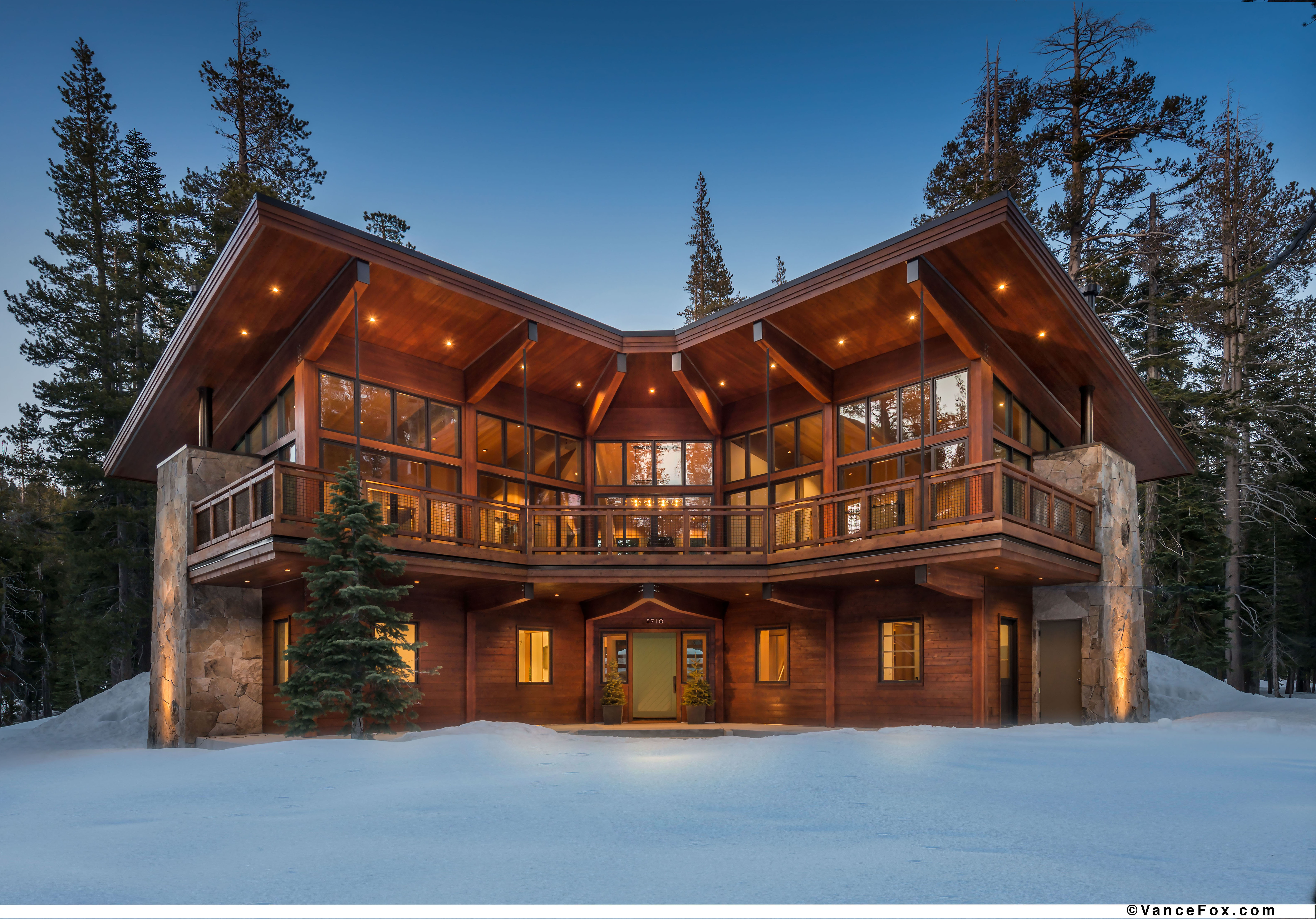
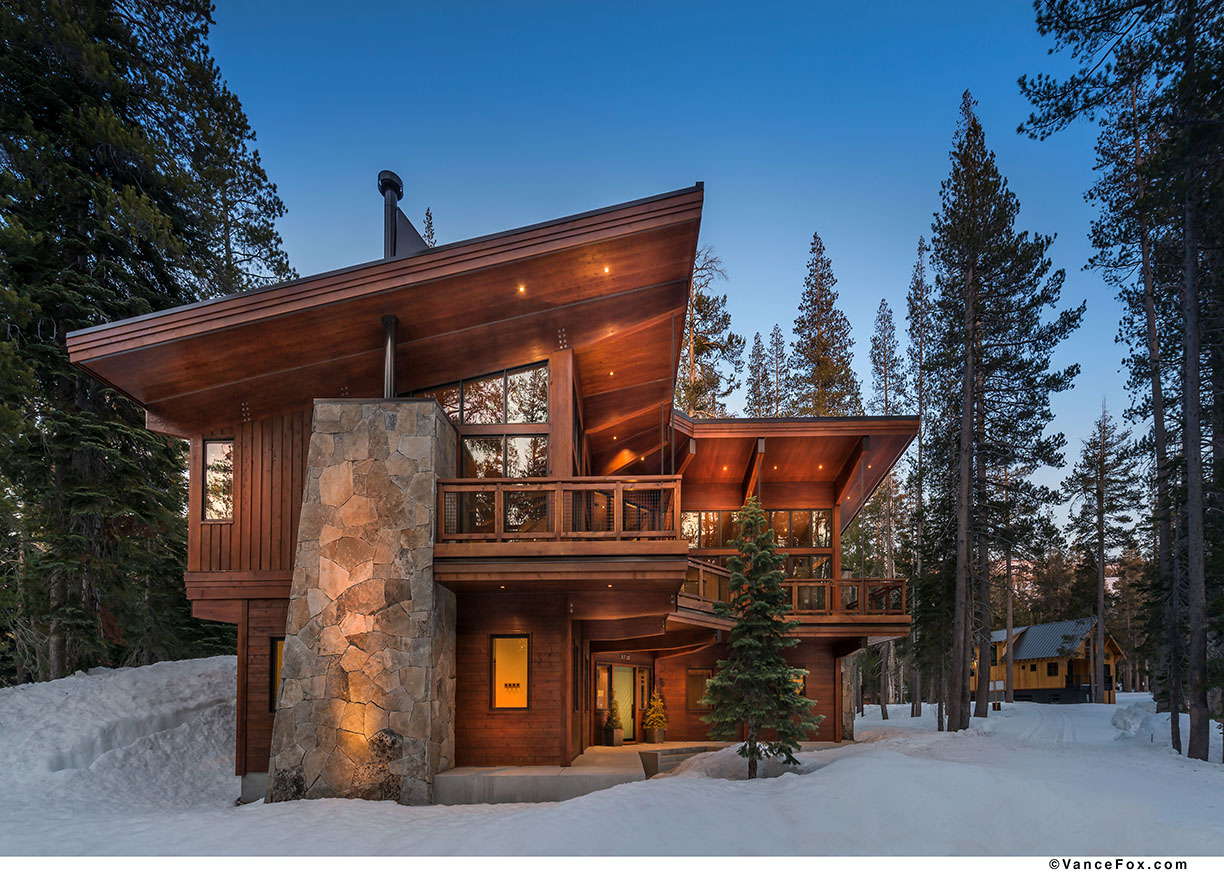
Photos courtesy of Vance Fox
Whether it’s designer fashion from Paris, colorful fabrics throughout India or architecture in The Hamptons, interior designer Birgit (“Bee”) Klein is constantly drawing inspiration from destinations across the globe. From an elegant estate on the East Coast to an old world-style apartment in Paris, Klein brings a unique perspective to the design world with Birgit Klein Interiors. The Beverly Hills, East Hampton and London-based interior design firm is driven by Klein’s European roots as well as her unwavering dedication to beautiful design.
When did you first discover your passion for interior design?
I started out working for a large corporation looking after major international corporations and managing portfolios worldwide. After many years of traveling and managing these portfolios, I was so run down. I starting helping my boyfriend at the time who was a property developer in London, and I loved it so much that I decided to give up my work and go back to the drawing board. I began to study interior design at the KLC School of Design in London. That was the best decision I’ve ever made. After studying, I started working for a few well-established interior designers. In 2005, I decided that I wanted to start my own company. As hard and daunting as it was at the beginning, I’ve never looked back.

What makes Birgit Klein Interiors and its designs stand out from other firms?
I often get hired because of my European roots, and due to the fact that my interiors are “less American.” I still have a lot of contacts in Europe — particularly in London and the U.K. to purchase furniture or antiques — and I continue to bring the European style across in my designs.
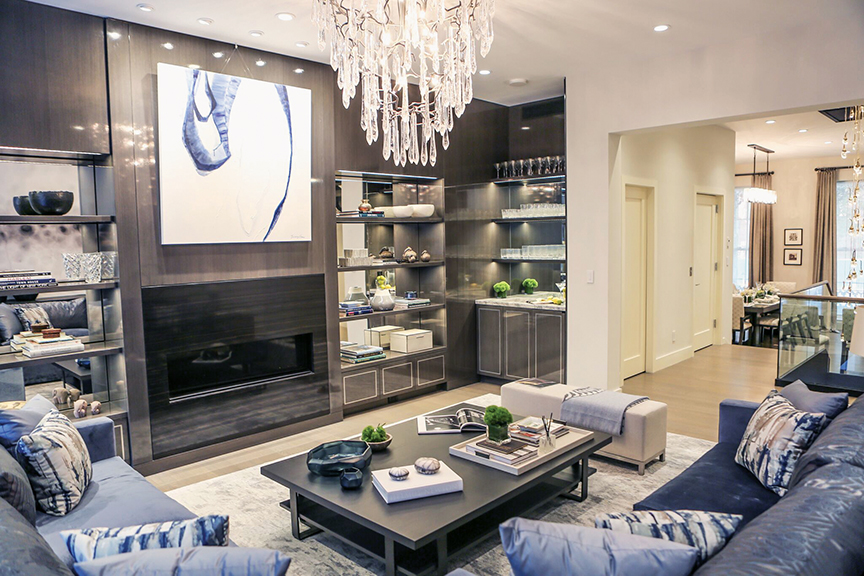
“The key to this space is the high-gloss lacquer built-ins that create a focal point. But everything is seamlessly integrated into one unit, so it doesn’t feel overpowering,” Klein explains.
How have your travels inspired your work?
During my travels, I am always so inspired — whether it’s walking through a department store, strolling through the city streets, looking at how the locals are dressed, or admiring architecture, hotels and exhibitions. I think traveling is so important for all interior designers because that is where we get a lot of inspiration.
I am inspired by design styles, materials and colors that are used in different countries. I find flower shops particularly interesting because Mother Nature has given us so many beautiful color combinations that I would not have necessarily thought about. Then, when I get projects — whether it is on the East Coast, West Coast or in Europe — I am always thinking about the things I’ve seen.
Designed to reflect a growing family, this cozy breakfast nook allows for relaxed and easy living.
What are some of your favorite regions in which to design?
I love designing homes in The Hamptons. There is just something special about the light. I also love the nature and the architecture there. I love everything about The Hamptons. I always want a reason to visit. I also really love designing homes in Montecito and London.
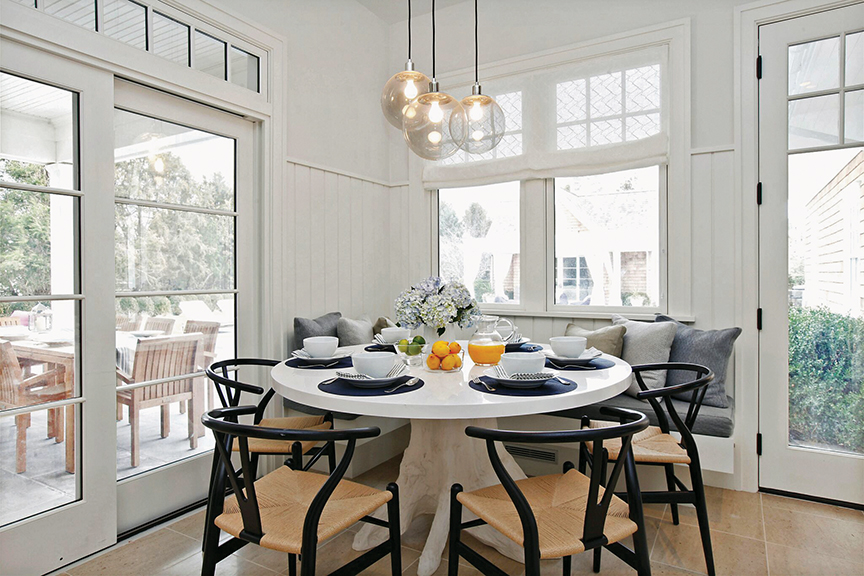
How do you get to know your clients, and how do you ensure they are represented in your designs?
It really depends on the client, and how well they know their style. If I have a client that knows what they want, I usually ask about inspirational images and I have a conversation with them to get a better understanding of what they like about these images. I try to understand how they would live in the home as a family. If I have a client that does not really know what they like, it is a bit more challenging. In these cases, I sometimes feel like a detective…. We will spend weeks gathering inspirational images and see where it takes us.
I want my client’s personality to be visible in the space, but, at the same time, I try to push them to be open to new ideas. It is really important that you have a client that gives you direction, but allows you to take it somewhere.
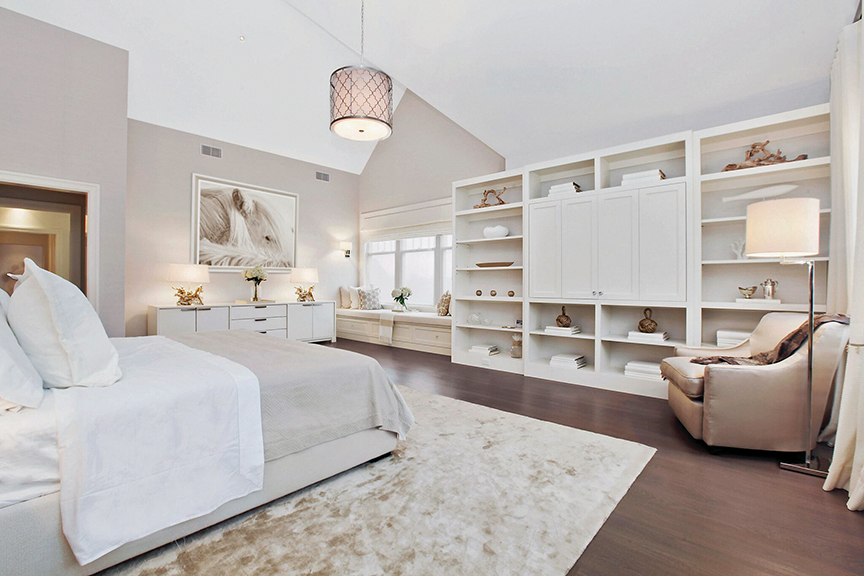
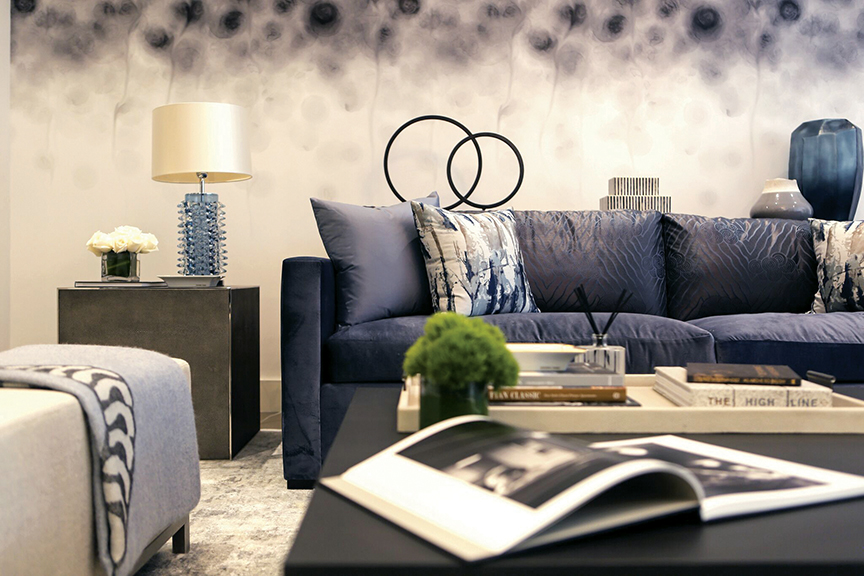
“The key to this space is the high-gloss lacquer built-ins that create a focal point. But everything is seamlessly integrated into one unit, so it doesn’t feel overpowering,” Klein explains.
You follow three key design principles — ensuring that spaces flow well together, considering the home’s geographic location, and creating timeless interiors — can you talk more about this?
When talking about flow, I always look at the house as a whole. The rooms need to flow and there needs to be a common theme throughout the house, especially as open-plan living has become so popular in recent years.When talking about flow, I always look at the house as a whole. The rooms need to flow and there needs to be a common theme throughout the house, especially as open-plan living has become so popular in recent years.
A home’s geographic location also makes a big difference in how we design it. A house that is located next to the ocean is going to be designed very different than an apartment in Paris or a townhome in New York City. You have to think about the privacy, lights, colors and what the house will be used for.
Creating timeless interiors is probably the most important out of the three principles. I have many clients who tell me how much they still love our designs eight or 10 years later. I like designing homes that feel comfortable, but elegant and luxurious at the same time. There is nothing worse to me than not being able to sit on a piece of furniture, or for the home to feel like a museum. It is really important that the spaces we design feel good to live in.
Photos courtesy of Brigit Klein Interiors.



